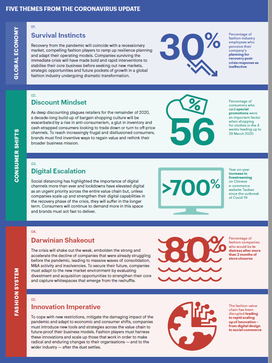 Before the pandemic hit our global economy, the fashion industry was already facing an evolutionary period punctuated by brick and mortar store closures, dying or empty malls, and the knowledge that our current supply chains and means of production were leaving heavy carbon footprints. And so we, as an industry, was already asking, "What next?" Little did we realize that we would be tasked with having to answer this question so soon but...now here we are and so, "What is next for the fashion industry in the face of the Coronavirus Pandemic?" The BOF/McKinsey report outlines that the fashion and apparel industries were already experiencing a steep decline before the COVID 19 pandemic. The report states that the average market capitalization of apparel, fashion, and luxury players dropped almost 40 percent between the start of January and March 24, 2020. We know retailers, particularly brick and mortar operations, were already struggling due to an increase in online and social media shopping. And now, with only non-essential retailers, such as grocery stores, drug stores, and hardware stores, open, then we can easily surmise that this trend will continue to accelerate...and retailers will need to close those stores with low foot traffic and allocate more money in redefining the shopping experience to continue to excite and draw consumers to their stores. But even outside consumers growing lack of interest in shopping (in general), consumers had already become, before the pandemic, increasingly less interested in participating in the excesses associated with the fashion and luxury sectors. Consumers had already indicated a desire for apparel businesses to shift their focus to providing apparel that was sustainable and/or produced by supply chains that minimized waste, such as upcycling processes, and instead of producing and selling fast, disposable fashion...to create high quality, mindful products. These same consumers, before the pandemic, had indicated the willingness to pay premium for these types of products. Some of what I've stated is highlighted in the attached State of Fashion as well as outlined below...and much of it lines up with what many of us were already saying...even before the COVID 19 pandemic. So...The quick nutshell is this: We know now that due to the contraction our economy will experience due to this crisis, then we will need to creatively explore how to provide high end products at budget pricing. An increase in personalization, micro-production, end-to-end production, athleisure, and a reinvention of work wear tailored towards remote work and a resurgence in special occasions dress as stepping out will be synonymous to dressing up are additional trends that should be considered as part of the future of fashion post Covid 19. Brands and retailers will need to make more seamless connections with technology such as the use of 3D and virtual reality and draw consumers into their physical stores with experiences that extend the online consumer experience. I've included additional insights regarding the BOF/McKinsey State of Fashion Report below. Take a moment to read and share your thoughts. Survival Instincts, to summarize, revolves around businesses understanding what structurally and strategically works for them and implementing tools and resources that maximizes their strengths and creates new opportunities. In addition, businesses will need to define their weaknesses and make decisions that either remove and/or minimize these weaknesses. For example companies will need to ask, "Does the current organizational structure truly reflect business needs or future goals?" Due to the current crisis, many companies are exploring ways to meet their consumer needs using remote, online, and or virtual means...if so, then does your current organizational structure in terms of human, technology, and communication support this strategy? If not, then now is the time to shore up this weakness...not in terms of parroting competition but in ways that will allow your organization to be the next market leader. Another example...a simple one...but hopefully effective...let's say you are a t-shirt producer and due to the changing work culture, you see a rise in the purchase of t-shirts. You may produce other items, such as dresses or outerwear, but your core business is t-shirts. An upsurge in the purchase of t-shirts should become your impetus to shift your resources from dresses and outerwear to t-shirts...and to not only meet the demand, but to begin to redefine why a consumer would purchase your t-shirts over the competition....is it because you can provide made to order, made to measure, superior fit, high quality, unique design? You have to understand your consumer and the market in order to survive the socio-cultural shifts that have arrived. In addition, you will need to also answer the question of what tools and/or additional resources will I need to employ to effectively meet this new demand. The next two trends posited by the BOF/McKinsey report deals with changing consumer behavior...interestingly enough, these are also not new trends, but rather accelerated behavior patterns due to the pandemic. I hesitate to agree with the idea that there will be a definitive rise in anti-consumerism for the following reasons that consumers' will more likely be ready to spend their discretionary income once respective economies begin to rebound...and the issue is less about consumer spending and more about "what" and "where" exactly will consumers want to spend their dollars. In answer to this question, I see consumers spending money on home electronics such as televisions, computers, gaming systems, office furniture, home security systems, as well as an increase in allocated dollars in home delivery services....just to name a few. Consumers will also continue to shop for apparel, but apparel that is geared towards the increased time now spent at home such as athleisure, loungewear, sleepwear, and I believe a new category geared specifically towards remote working will emerge. I do agree that consumers will be more mindful of how their dollars are spent and who receives those dollars. Consumers will look for value rather than discounts and purchase with purpose with companies that reflect their personal values. The final points posited by the report harkens back to the evolutionary period we were already experiencing as an industry...rather than survival of the most fit, survival will be contingent on the most connected. Either in terms of technological tools used to create more seamless development to production processes, the use of data intelligence to make business decisions connected to the current climate experienced by businesses and their consumers, real viable connections between industry members...whether that be direct or indirect members, and last but not least extending our understanding of the supply chain. We often speak of collaboration, but we will need to stretch this concept to include partnerships that extend supply chains and build a network that provides products truly driven by consumer demand...informed by business intelligence data. It may not just look like fabric and garment producers, but also working with tech companies that can address how to produce raw and finished goods in a quick and efficient manner...that most importantly reduces our carbon footprints. As we move towards a more dynamic process of providing value-driven goods to consumers, we will also see increased innovation within the industry. In order for this happen then this means an industry led by enterprise systems that are connected beginning with pos data and supported via erp, plm, and cad software. We will not only need to be digitized, but we need to mine the data and make business decisions based on the collective information provided from these applications. There's is more to consider in the report attached. I welcome your thoughts and insight.
0 Comments
 The top 3 words that came to the minds of fashion executives, according to the BoF-McKinsey State of Fashion Survey, when asked to describe the industry, were “changing,” “digital” and “fast.” So what does this mean? The implication is that change is a key priority among industry leaders with an emphasis on digital and speed-to-market. My next question for you...Is your organization positioned to excel in this new digital fashion landscape? This is a question, small and large and regardless of fashion tier, that every organization should be asking and proactively addressing. Where to start? Do a review and an assessment of your physical, people, and financial resources. Then begin to list—What current resources can be optimized to increase speed, improve efficiency, and shorten lead/turn times? And strategically address (action, not talk)—What resources will need to be added to meet your organizational goals. This could be the adoption or upgrade of development and/or production software, investment in equipment “and” people (current and/or new employees). Now is the time to catch up if you are behind or to get ahead of your competitors. Finally, you will need to make the often tough decisions on where you may need to reduce expenses...do you need to decrease payroll, revisit marketing budget, or reduce sales associated expenses. Have more questions? Feel free to reach out to me. Happy New Year and Happy New Opportunities! #fashion #investments #optimization There are currently a lot of major strategic partnerships happening within the intersection of fashion (at all levels of the cycle) and technology. For example, Dessault Systemes has just announced it will acquire a majority stake in Centric Software. For those of you unfamiliar with Centric...just know that recently this company has been quickly and aggressively carving a significant stake for themselves in fashion PLM. Another strong player in the fashion PLM software business is PTC. PTC's emphasis is primarily focused on retail PLM while Centric's PLM focuses on fashion brands and manufacturing. PTC has most recently landed a $1 billion dollar partnership investment from Rockwell Automation...all I can say is the impact of these types of partnerships spell out "bigger things to come" for the apparel industry especially when it comes to technology. What we can definitely glean from these mergers and partnerships is that the landscape for connected manufacturing and retailing (insuring faster, leaner, cheaper...and yes, if the commitment is made, more sustainable production, distribution, and sell of apparel products) is becoming much bigger. There are a lot of buzzwords floating around...Blockchain, A/R, A/I, ioT, and circularity...to name a few...and companies are preparing to capitalize on these opportunities. What steps have your organization began to take to stay or become more competitive as we enter this new frontier? #thefutureisnow.
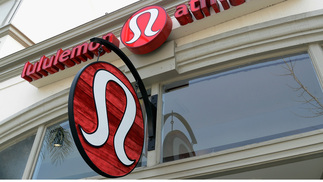 Lululemon Athletica Store Front Lululemon is a 20-year old successful yoga wear company founded with the goal of providing technically athletically hip clothing to yogis and aspiring yogis around the globe. By the very nature of Lululemon's founding vision, the company actively designs with innovation, specifically the use of technically-smart, innovative fabrics, in mind. Innovation is a great way to create a sustainable competitive advantage as oftentimes smaller, start-up companies are slow or financially unable to invest the time and money required in the R&D process. An organization taking advantage of R&D as a competitive advantage also establishes a niche market of expert wearers, such as yoga instructors, whose opinion on appropriate yoga wear is highly valued by their eager students which for the case of Lululemon has turned into the sound of ka-ching. At least ka-ching has been a popular sound ringing out in Lululemon Athletica stores until fairly recent. Everyone knows that yoga is not a sport, but rather is considered a physical, spiritual, and/or mental practice. As a practicing yogi, I typically describe my practice as a moving meditation and so....the last thing one associates yoga with is sexiness. Yoga and yogis, like myself, take ourselves way too seriously to ever want our twists and bends to be viewed as sensual or erotic...and so we find ourselves asking how did these super sheer, super sexy, butt-revealing yoga pants ever find their way to market? How did things go so wrong, so fast for Lululemon Athletica? 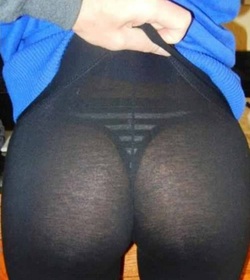 Sheer Black Yoga Pants In tracing what went wrong with Lululemon's signature Luon yoga pants, we've found ourselves pointing the finger at recently displaced Chief Product Officer, Sheree Waterson. Waterson has been with Lululemon since 2008 and I will wager has probably seen a lot of technical black yoga pants pass her way during her tenure. Well after a while, folks, one black pant starts looking a lot like another black pant and so on. But is the quality gaffe seen with these black, sheer yoga pants really Waterson's fault alone or rather indicative of a company who during the last few years has turned its back on its own quality stand? I would imagine the truth lies somewhere in the middle between a chief product executive pressured to meet the growing demands of a rapidly expanding business and a chief executive office pushing for ways to deliver product that satisfy both the consumer and the profit-driven stockholder.  Black Sheer Yoga Pants Indulge my rampant imagination for a moment and allow me to demonstrate the day(s) in the life of a product debacle: Dear Diary: Day 1: Today started same as any other day, the product managers have reviewed and approved the fabric swatch sent from the Taiwanese supplier and so it looks like I'm a go...I will soon be sewn into one of the millions of athletic black pants sold to millions of happy, wealthy, and zen-driven Lululemon yoga customers. I'm so very excited. Day 15: While waiting for the fabric to arrive, the factory, luckily, had some sample yardage of the approved luon fabric and so now, my fit prototype is in Vancouver being worn by one of the company's fit models and specs are being double-checked for final production. I'm pretty sure the company's fit room is well-lit and the fit model is not only just expected to wear the prototype, but to also stretch and bend in the fit sample using some of the same moves as most yogis who will be wearing me. Or at least I hope so:)...can't wait to be made into bulk production and become one of the many pants worn by millions and millions of Lululemon's dedicated customers. Day 17: We've all just heard the fit has been approved...great news for those of us waiting to be turned into Lululemon's popular luon pants...I think I overhead the factory manager saying that markers have been set and bulk fabric is due to arrive in just a few days. I'm not sure, but I think, I may have also heard the manager say something about finding a cheaper fabric alternative...very similar to the approved luon, but much cheaper. I hope the factory has passed this tidbit of information on to Lululemon as it would be a shame for the factory to jeopardize both their reputation and Lululemon's. I think based on Lululemon's checks and balances, the factory will have to pass the fabric alternative on to Lululemon for their final approval. Ok, fingers crossed that this all goes ok...so ready to be a fancy-dancy techno yoga pant:)! Day 21: Looks like we are back in business and on schedule for bulk production! The factory manager received approval from Lululemon's product development team to proceed to bulk with the luon fabric substitution. The cost savings was too attractive to pass up and the factory will forward the substitute fabric tests to Lululemon for record once the bulk fabric arrives. 'Sides this is a fairly basic item for Lululemon and so should not be a problem...at least that's what "I" think I heard one of the factory managers quote back the words from the Lululemon's product development team. So all systems are a-go and tomorrow with a new and "hopefully" improved fabric, but definitely "approved" fabric, I will begin my life as a Lululemon techno-savvy, black yoga pant. I am counting the days till I and the rest of the pants are finished and shipped to Lululemon stores across the globe. I will be so happy to have a pant owner and a yogi home to call my very own. Day 60: Hey! So sorry it's taken me so long to write in you, diary. I've been so busy with the cutting, sewing, tagging, boxing, shipping, unpacking, distributing, I am finally located, for the moment, in a Lululemon Athletica retail store in Santa Monica. It is so beautiful here! The weather is nice and the people who come into the store seem to both have lots of money to shop with and are very interested in yoga as a healthy lifestyle choice. Everyone in Santa Monica looks fit and healthy. I just know I'm in the right place for now and it will only be a couple of days before my owner-to-be finds me and take me to my new permanent home. I've been in the store for about a week and am a little nervous as have heard a few potential yoga pant owners discussing their concerns about how see-through our pant fabric is. I just think to myself no way this is possible especially after all of the testing done for the new fabric. But...you know come to think of it...don't think anyone really tested the look, fit, and performance of the fabric once stretched. This makes me a little nervous, but Lululemon has been making black yoga pants for years and I can't imagine any issue with me and my like-designed friends. Day 70: It's all hit the fan, dear diary:(! Me and the other black yoga pants that were produced and shipped same time as I are in recall. Recall! I mean why? It's just not fair! I hear that many customers across the country have been complaining about how "sheer" we are and that they don't want to wear yoga pants that will expose them while bending and stretching into poses like downward facing dog or the plow pose. I mean the "sheer" horror of it (no pun intended;0)! How can this be? But, you know I really think this is largely due to switching the fabric at the last minute and "not" taking the time to fully test the fabric for quality and fit. Everyone, including me, was in such a rush to produce, ship, and sell we forgot how important to insure the integrity of our product, to not only keep our promise to our customers, but also the promise we made to our business which states, "Quality is at the heart of what we do...." What were we thinking?! Now I'll never be bought and worn...who's going to wear sheer black yoga pants? Well, I can think of a few types of customers, but not dedicated, loyal Lululemon yogis. I feel this is my demise and very likely my last diary entry. I hope you take good care, diary, and that someone will read my journal and learn the lesson I and Lululemon learned a little too late.  Lululemon's Manifesto This product management gaffe has been especially daunting for the company as this particular pant on recall represents 17% of women pants sold in Lululemon Athletica stores and has since prompted a shortage in pants which of course, in terms of merchandising, means same-store sales are effected. In fact, same store sales estimated for the first quarter, available in June, have been downgraded from 11% to between 5-8%. In addition to the estimated 67 million in retail sales this big quality misstep has created for the company, stocks value has also recently declined. There are a lot of opportunities for Lululemon to learn from their mistakes and move forward. I've read, in addition, to the big shake up in the product development department, the company has also begun to review their quality control initiatives looking to take a more aggressive and proactive to insuring that the product shipped matches the company mantra. This is great news and shows the company's commitment to learning and improving from their mistakes. Many industry professionals are citing the fault lies in too slow of a response from the company, but I ask just how quickly can any organization react once the goods are on the sales floor and selling? At this point, you can really only hold your breath, click your heels, and hope that sheer black yoga pants become the next new yogi craze. In this case, Lululemon was "not" so lucky. The answer isn't quick fixes to an existing problem which I personally think Lululemon has handled quite well by making the decision to recall the product. No, the answer does not lie in creating quicker responding reactionary measures, but rather in implementing checks and balances which safeguard the integrity of the product. Hence, I reference back to my slide presentation on The Importance of Quality Assurance. This is done by product development remaining, at every step, engaged and involved in the approval of each component of the garment produced. This is going to mean the company spending money on external testing resources and not relying solely on the tests submitted by manufacturers, as well as spending money on expert QC professionals who can travel to the factories to insure the materials and/or garment approved will indeed be the garments produced and shipped. Finally, staying true to the values important to your customers and instead of chasing profits cementing loyal, sustainable relationships with customers who want to "and" are able to spend money on quality products that not only perform technically well, but also represent what's most important to the Lululemon consumer. Lululemon would do well to take careful note of their own manifesto, one of which states, "The most should never give way to that which matters the least." I couldn't agree more. Would love to hear your thoughts! Fashion Freelance Works! Find out how I can work for you by submitting your contact information on this website.
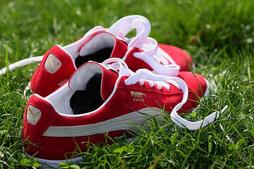 Puma continues to lead as eco-innovator for the sportswear industry having recently launched its first close-loop collection of footwear, apparel, and accessories, InCycle. All products from the InCycle collection are either entirely biodegradable and/or recyclable. The collection ranges from biodegradable tees and sneakers, as well as recyclable track jackets and backpacks. In addition to the new eco-friendly collection, Puma continues to raise the eco-conscious bar in the apparel industry with its new marketing campaign, Bring Me Back, launched in conjunction with the new InCycle apparel line. Bring Me Back encourages Puma consumers to recycle their used clothing, accessories, and shoes from any brand by bringing the product back to one of Puma's recycled bins installed in Puma stores. 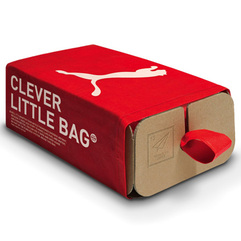 Taking the lead in sustainability is nothing new for Puma, you may recall when in 2010 Puma made its first bold sustainability statement with the introduction of the Clever Little Bag. The Clever Little Bag is a bag Puma designed in collaboration with Fuseproject. The bag contains 65% less cardboard by using a bag made of recycled plastic as the outer layer instead of the usual cardboard that is placed on top of most shoe boxes. Puma also eliminated all plastic and tissue that typically comes in the shoe box. You can log into the Puma website and read the company's Life Cycle Analysis which highlights all the positive differences this packaging has made in terms of carbon dioxide emissions, energy use, paper waste, etc. For those of you still not aware of this innovative, packaging concept from Puma and how the packaging was developed, here's a quick video: 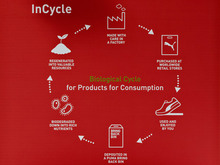 Puma continues to do what many other retailers only dapple their feet or give lip service to doing...which is showing how much they truly care about their customers and future generations of customers by not only creating top-performing, quality driven product in their apparel category, but investing money to create innovation at all levels of the product life-cycle (production, packaging, marketing, and retail). This is where the real magic of corporate sustainability happens...creating sustained perceived value of your product and brands in the eyes of your consumers, pushing your organization far ahead of your competition with innovative products, merchandising, and marketing ideas, and establish an environment of "care" in the way your communicate to your customers. When customers believe your company and/or brand really cares about the quality of their lives, those customers become and remain loyal consumers. Puma also understands that innovation does not stop with product launch, but includes analysis and follow up which can translate back into more products that address their consumers needs and interests as well as build leaner and more cost-driven processes in the long run for Puma. This is what I call a win-win scenario. Puma continues to create a standard of how innovation and corporate responsibility build strong competitive advantages, enhances market share and increases profits. Fashion Freelance Works! Find out how I can work for you by submitting your contact information on this website.
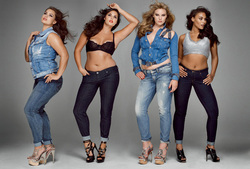 Ok, fashion industry time to face it....full-figured models are here to stay and actually have been around since the beginning of modern art. Consider the paintings of Titian, 16th century Italian painter, and Ruben, Flemish Baroque painter, whose fondness for painting full-figured women popularized the term "Rubenesque" for plus-sized women. These talented artists were influenced by studying statues of ancient Greek and Roman women who were typically portrayed as full-figured (at least by today's standards). 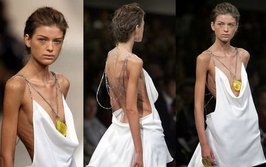 Well, we have all heard or seen the media backlash against skinny models with issues ranging from perpetuating a negative body consciousness to young women to concerns of models suffering from eating disorders, such as bulimia and anorexia. In response to these concerns many leading fashion magazines, like Vogue or the German magazine, Brigitte, have banned the use of underweight models. Israel has just begun the new year resolving to ban the use of extremely skinny models in magazines and on the catwalk. Let's just say, 2013 is going to be hard for the Kate Mosses' of the world....who has actually gained quite a bit of weight as the years have passed (Go Kate!). So the real skinny (yes, pun intended) is this...ultra-skinny models (size 0-4) don't really represent the shopping consumer's body. The average female consumer is a size 14. Yes, you heard me...a size 14. This is the starting size for plus-size clothing. The average American female customer is already bypassing those smaller sizes and nose-diving right into the size 10, 12, and 14...and can be found spending their dollars and time with those retailers who can effectively address their need for high quality, fashionable, versatile plus-size clothing. Are you one of them? If not, then you may want to take a long, slow look at what is happening with our very valuable customer, pause for a hard look at size assortment replenishment information, and stop for a bit at size ranges experiencing high stock turns...looking? Now, that you are "seeing," it's probably time you become proactive and start adjusting size range assortments to reflect what the numbers are telling you. As my primary goal, always, is to add a little food for thought...I'm gonna wrap it up here. Not before a little advice that goes like this...
Do you see your consumer in any of these figures? Check your CRM data? If so, then now may be the time to start working with your vendors to purchase a bit more production fabric, partner with your technical designer to adjust, as needed, spec measurements, consult with your pattern-maker for optimal marking and grading, and plan to spend a bit more money, to earn a "lot" more money. Would love to hear your thoughts. Fashion Freelance Works! Find out how I can work for you by submitting your contact information on this website. Curvy girls is a new show debuting on Nuvo TV which showcases the lives of four full-figured professional models; including the highs and lows of a highly judgmental and competitive industry.
We're all familiar with green fabrics like organic cotton, bamboo and hemp, but which new materials and practices are moving fashion forward to a greener, brighter future? Here are eight processes and fabrics paving the way.
1. Dying with Air, or How to Save Water in the Coloring Process The dying and finishing of fabrics represent the biggest impact of textile industry in the environment. About 85% of the water, 75% of the energy and 65% of chemicals used in textile production is used in dying and finishing. This is why greening this part of the process is so important. During the dying process, water is used to apply color, but also to push the fabrics through machines. New machines by companies like Fongs are using air to push the fabrics, thus reducing the amount of water used. With this method, the dying of a t-shirt can go from requiring 200 to using only 50 liters of water (Textile World). Another, more eco sound, alternative is a system called AirDye, which works with proprietary dyes that are heat-transferred from paper to fabric in a one-step process. This can save between seven and 75 gallons of water in the dying of a pound of fabric, save energy, and produces no harmful by-products. It was developed in California by Colorep. 2. Digital Printing Another technology that's moving forward in this direction is digital printing -- a process in which prints are directly applied to fabrics with printers, reducing 95% the use of water, 75% the use of energy, and reducing fabrics waste. This technique has been used by designers like Mary Katrantzou, Alexander McQueen and Basso & Brooke. Companies that produce machines and inks include Japanese-based Itochu Corpand Huntsman, but fabrics that produce digital print fabrics can be easily found online. 3. Recycled PET Bottles Perhaps one of the materials that has grown the most in the past years is recycled polyester from PET, which went from a groundbreaking experiment by Patagoniaoutwear in the mid-'90s to a regular material these days. Fabrics with some percentage of recycled PET can be found in many labels today, and recently the material stepped up to enter the high-end fashion world with the Ecotech Zegna solar jacket. Even if these fabrics are non-biodegradable, their production uses less crude than the manufacturing of new polyester and keeps plastic bottles from landfills. 4. Cork It's certainly not a new, groundbreaking material, but its presence in fashion has been intensifying over the past years. The reason? With wine industry turning to plastic and screw caps, environmental and business groups have been pushing for the use of this material in other areas to protect Portugal's cork forests (if they're not profitable anymore, they won't survive much). And with leather becoming a less popular material among environmentalists, cork's versatility and leather-like use is blooming. Did we mention it's impermeable, fire-resistant, easily cleaned and long lasting and dust and dirt repellent? 5. Fabrics from Recycled Materials PET is not the only material being recycled. Other alternatives include, for example, fabrics made with nylon recovered from products like nets and carpets by Mipan. An example of the use of this is the swimwear line Eco Panda. Some factories are also recycling cotton industrial leftovers, which keeps these scraps from incinerators or landfills and creates new materials. One example is the Italian initiative EcotecProject. 6. Wash-Free Clothes: Freezing Jeans .For the past years, many companies have been developing stain-resistant fabrics that need little to no washing. But what if there was a piece of clothing that needed no washing at all? Enter the recently launched line of jeans by Brazilian manufacturer Tristar, which they claim can be 'cleaned' from bacteria (not stains) with 24 hours in the freezer inside a special bag. According to owners of the brand, this kills all bacteria. Stains, however, need to be washed out in traditional ways. 7. Fabrics from Exotic New Materials From seaweed to banana fibers, researchers are trying to find the next best thing to produce fabrics. Some new alternatives include Seacell, produced with vegetable cellulose mixed with seaweed; Piña fiber, made with fibers obtained from the leaves of pineapple plants;Lenpur, from the pulp of sustainably cultivated white fir wood; and Banana fabric, made with stems and leaves of banana trees. 8. Nettles It's been around since World War II, when the Germans had to find an alternative to cotton to make uniforms because the market for that fiber was dominated by England (The Ecologist). And even though there's been talk about a comeback for years, it was only recently that the stinging nettle became more involved with the fashion world. Various projects in Europe have begun developing new ways to produce fabrics with nettle, and one of the commercial products with it, STINGplus, recently won an award in London. Last year, also in England, BBC presenter Kylie Pentelow wore the first nettle dressmade of these fibers, from Leicester's De Montfort University investigation project. Advantages? It's a weed, which makes it very resistant, needless of fertilizers and pesticides, and easy on water use. Plus, its fibers are longer and stronger than cotton, and finer than hemp. Some people call this the most sustainable fiber ever, though finishing processes have to move on so that it can become massive. Courtesy of TreeHugger The GreenShows is an ambitious fashion event that seeks to exclusively showcase designs that are committed to ecofriendly, ethically-sound, fair-trade fashion. This is The GreenShows 2nd year producing a full-length runway show by 11 select designers. Each designer will be given the opportunity to show their Fall 2010 collection before an audience of influential editors, buyers, and VIPs. Each designer selected for The GreenShows must follow a specific set of criteria geared toward demonstrating that innovative, luxurious, and inspirational fashions can be created, produced, and manufactured without compromising ethical and environmentally-conscious standards. Some examples of what the brands may incorporated include: - Vegan/Animal-Free Materials - Ethically Produced - Fair Trade - Organic Materials - Recycled Materials - Ethically Produced Wool - Natural Dyes - Carbon Footprint Conscious As well as showcasing eco-friendly fashions, The GreenShows’ design team will produce the entire event using 100% environmentally-friendly, energy efficient, sustainable, recycled, recyclable and compostable materials wherever possible. From the runway to the lighting, from the marketing to the invitations, The GreenShows is devoted to working with materials that are of the highest green standards available on the market. The GreenShows will host an opening night runway show and event on Febuary 15, 2010 followed by two days of shows. Lizz Wasserman showed Popomomo's (short for post-postmodern movement) Spring 2010 collection -- the confluence of geometric details, cutout shapes, pops of color, and abstract prints -- during Los Angeles Fashion Week (LAFW), this past week. Garments are made with sustainable fabrics -- hemp, organic cotton, and bamboo -- in L.A., click through for photos from the installation: Popova & the Constructivists. Original Source: Treehuggers.com 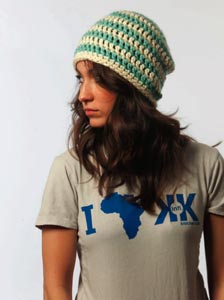 One of the wonderful facets of fashion is its ability to create and build community. Oftentimes, we think of these communities in terms of cliques or fashion tribes but there is a non-profit organization, Krochet Kids, that has extended the meaning of fashion community to create economic empowerment to the women of Northern Uganda. The Krochet Kid's want to create sustainable economic development programs that support holistic growth of individuals and communities within developing nations...You know the old saying, "Feed a man a fish and he will eat for a day. Teach a man to fish and he will eat forever." Well, that's Krochet Kid's mission....but instead of fish, this enterprising group of individuals are using hand-crochet beanies. Proceeds from hat sales go back into the community to promote further development such as improving education, healthcare, and providing clean water in Northern Uganda. Want to spread the love, give a donation or purchase a hat? Please click on the link and find out how you become a part of this fashion community. http://www.krochetkids.org/projects_program.php Original Source: CoolHunting.com |
Eco|ConsciousContact Fashion SpeaksThank you, your message has been sent
Archives
April 2020
|
||||||
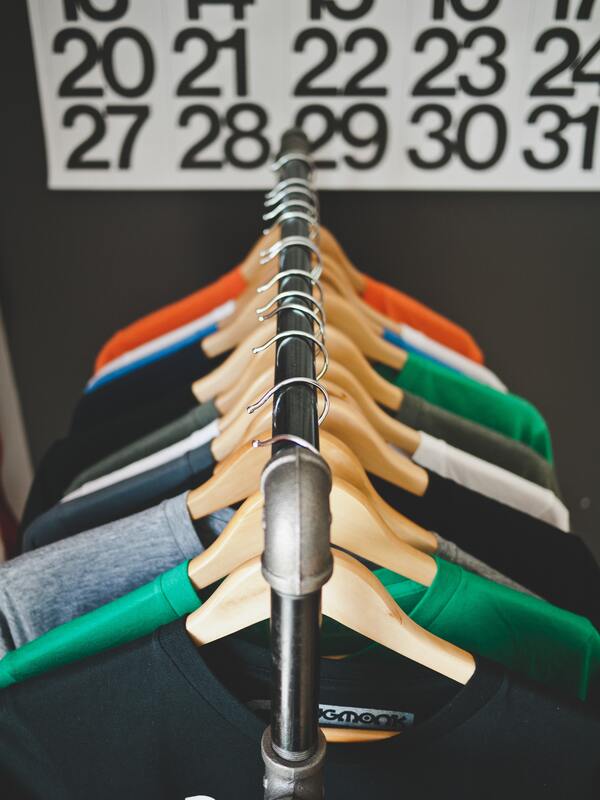

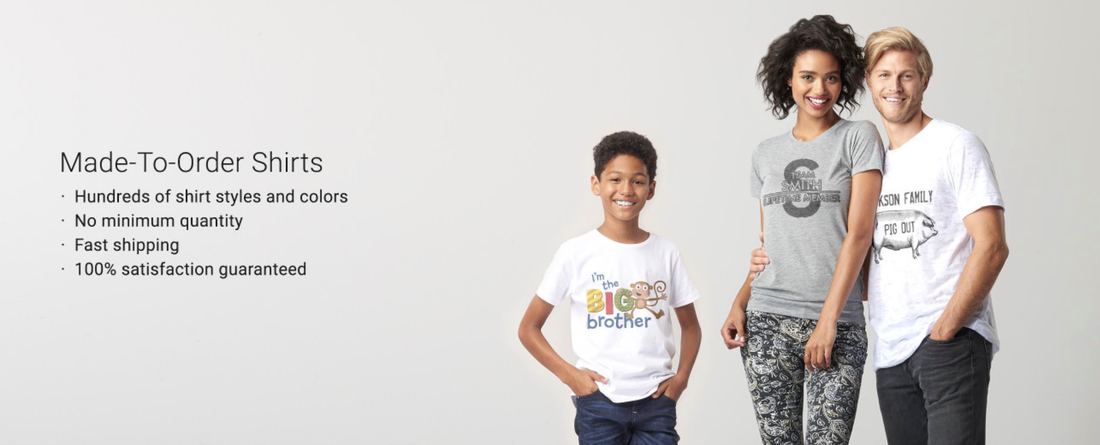
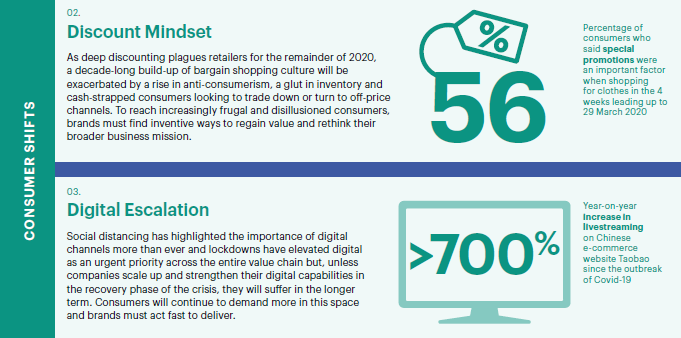
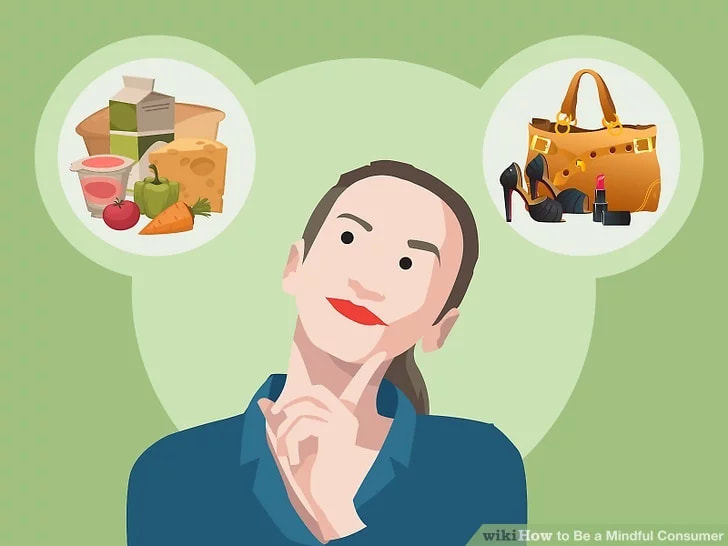
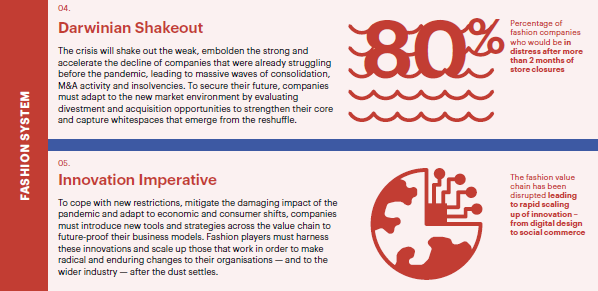
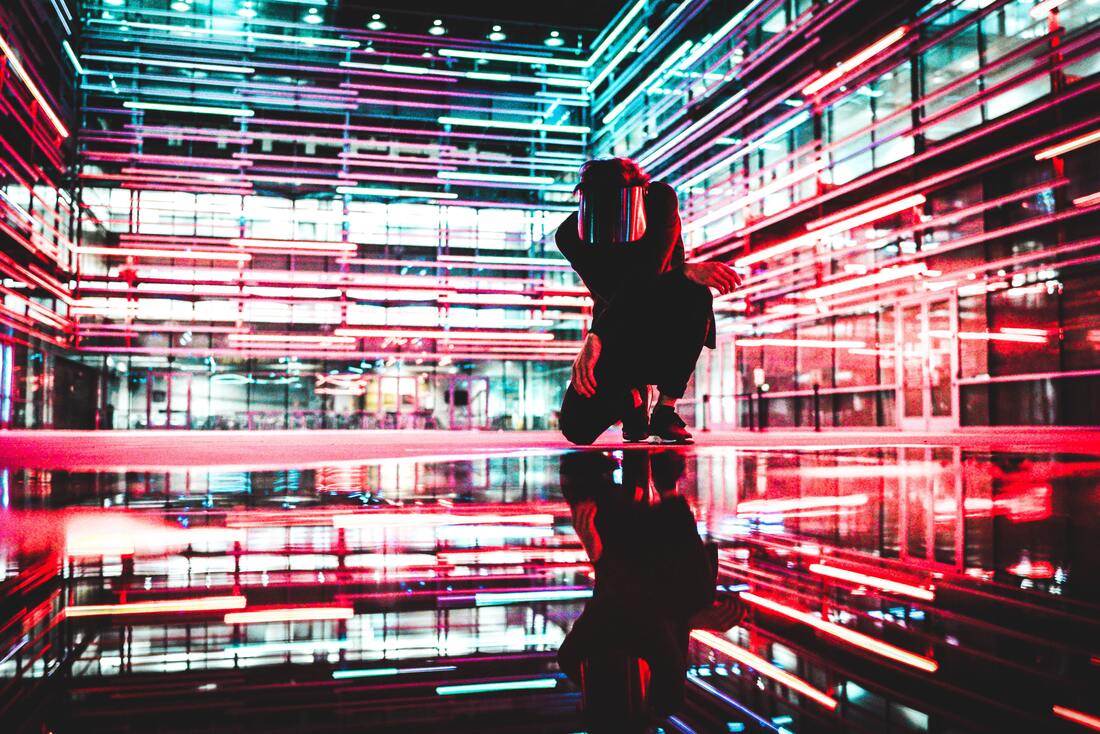


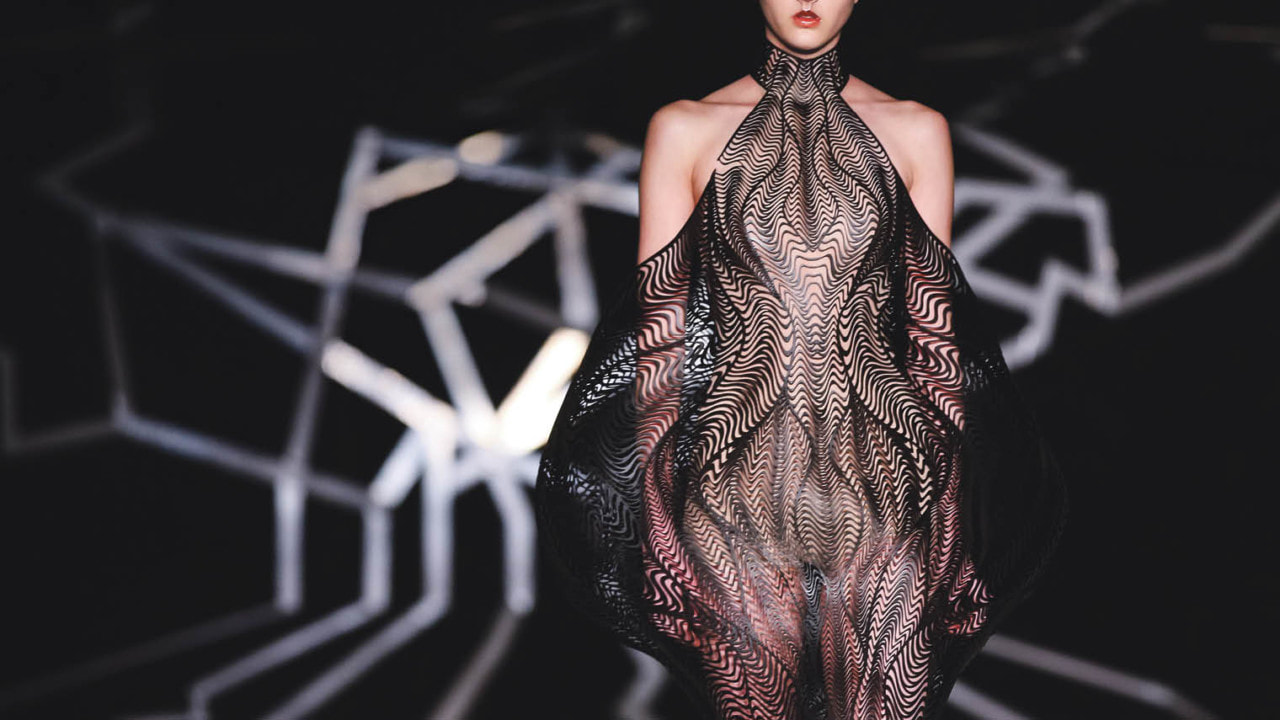
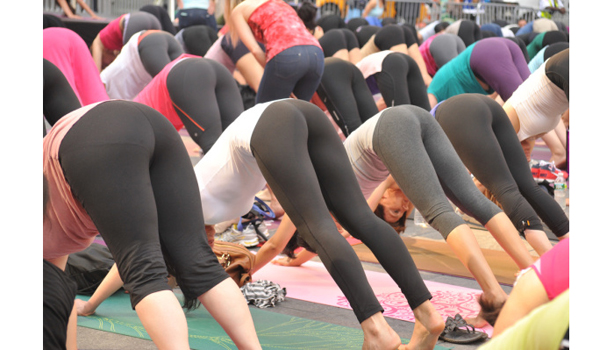
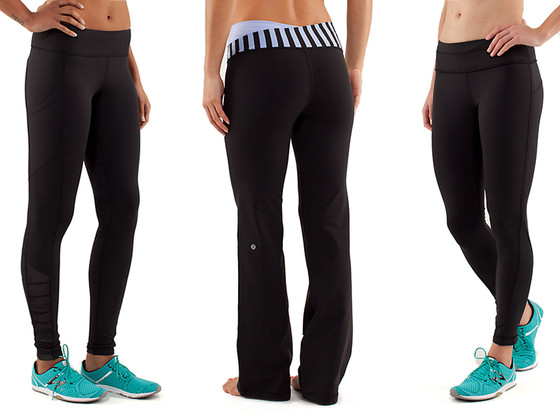

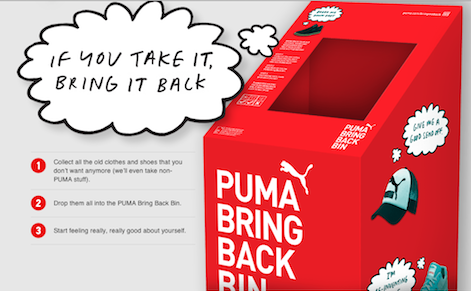


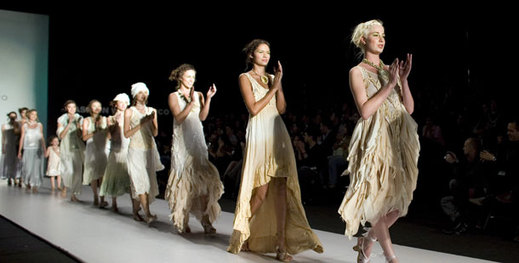
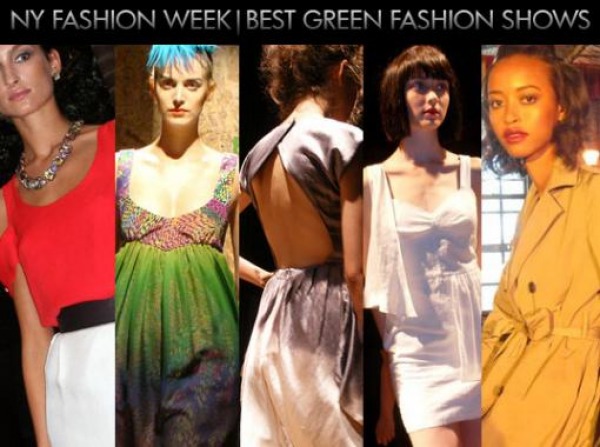

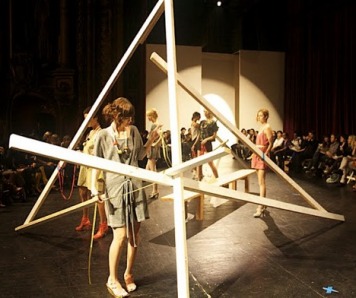
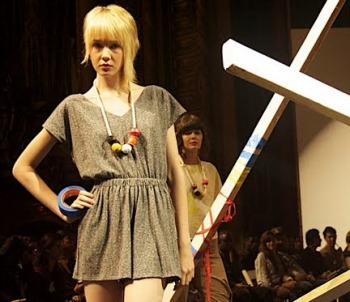

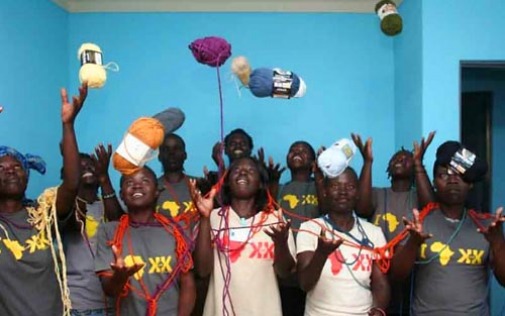
 RSS Feed
RSS Feed
